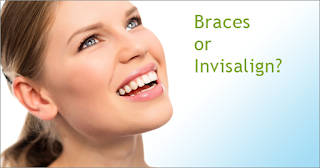At the end of braces or Invisalign treatment, patients
often ask which kind of retainers are best to have, removable or fix? There are advantages to each one and Dr. Nancy Phan at Care Orthodontics can give you recommendations on the ones that are
most appropriate for you. To educate yourself, it is also very helpful to know the difference between these
retainers. Below are the breakdowns of
pros and cons for each type.
Removable
retainers: They are best
retainers since they allow you the flexibility to remove while you eat, brush,
floss and important social events while wearing them at night and initially
during the day while the braces first come off to keep your teeth well aligned
and in shape. Of the category of
removable retainers, there are 2 kinds:
Hawley and clear retainers.
Hawley retainers are often seen with a wire run across the front teeth
and a customized process acrylic adapted to the back of the teeth. This type of retainers is thick and durable;
however, they require 2 weeks of adjustment time when first wearing them. The clear retainers are made out of a special
kind of clear, shape-performance plastic to wrap around your teeth. These retainers are very thin, comfortable,
and satisfactory both esthetics and retention requirements.
Fixed retainers
are glued-in retainers: There is
a piece of wire that was glued behind your front teeth. These retainers are great in that they are
‘fixed it and forgot it’. They are in
24-7 and you don’t have to remember to put on retainers. However, these retainers require more
maintenance care. You need to use a
special tool called ‘floss threader' to floss daily. It usually takes a few minutes longer to
floss with fixed retainers daily. They
are also required to be checked periodically by your general dentist or
orthodontist for stain or breakage. If
any of the cement broken off from any of bonded teeth, they need to be fixed or
the teeth may move. Also these retainers
tend to break overtime and may need to be switched over to removable retainers
in the future.
So, which retainers should you choose? Although some orthodontists may recommend
upper removable retainer and lower bonded retainer, at Care Orthodontics, Dr. Nancy Phan often recommends upper and lower removable retainers for ease of care and
cleanliness. Ultimately, the most
important thing is to wear retainers as directed, regardless of which
type. As long as you wear retainers, you
will be able to retain your best smile results.
Give our office a call if you wish to schedule a
complimentary consultation. Our orthodontist is Board Certified and committed to the highest standard of excellence. For more
information, please visit our website, www.CareOrthodontics.com.


















